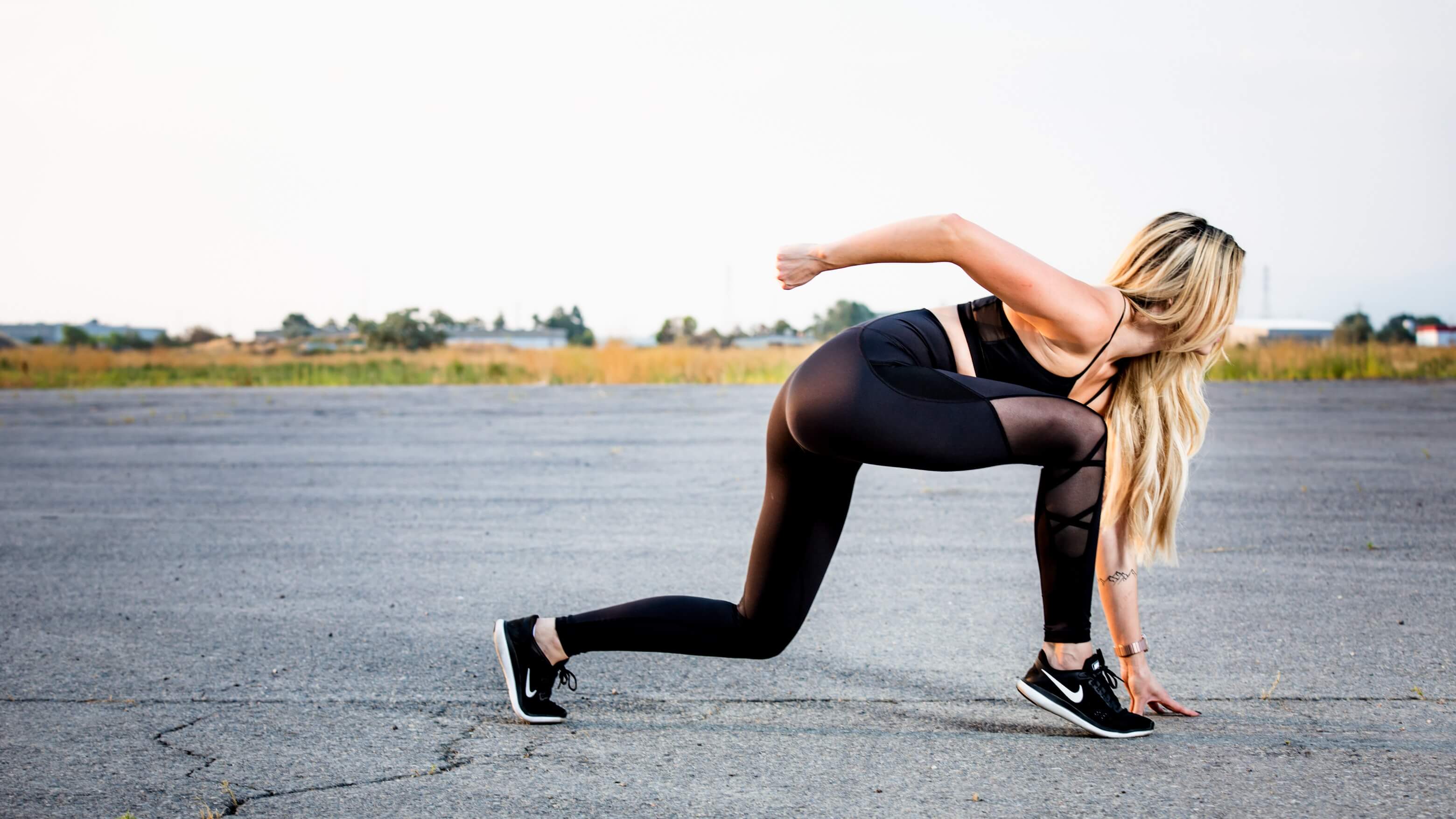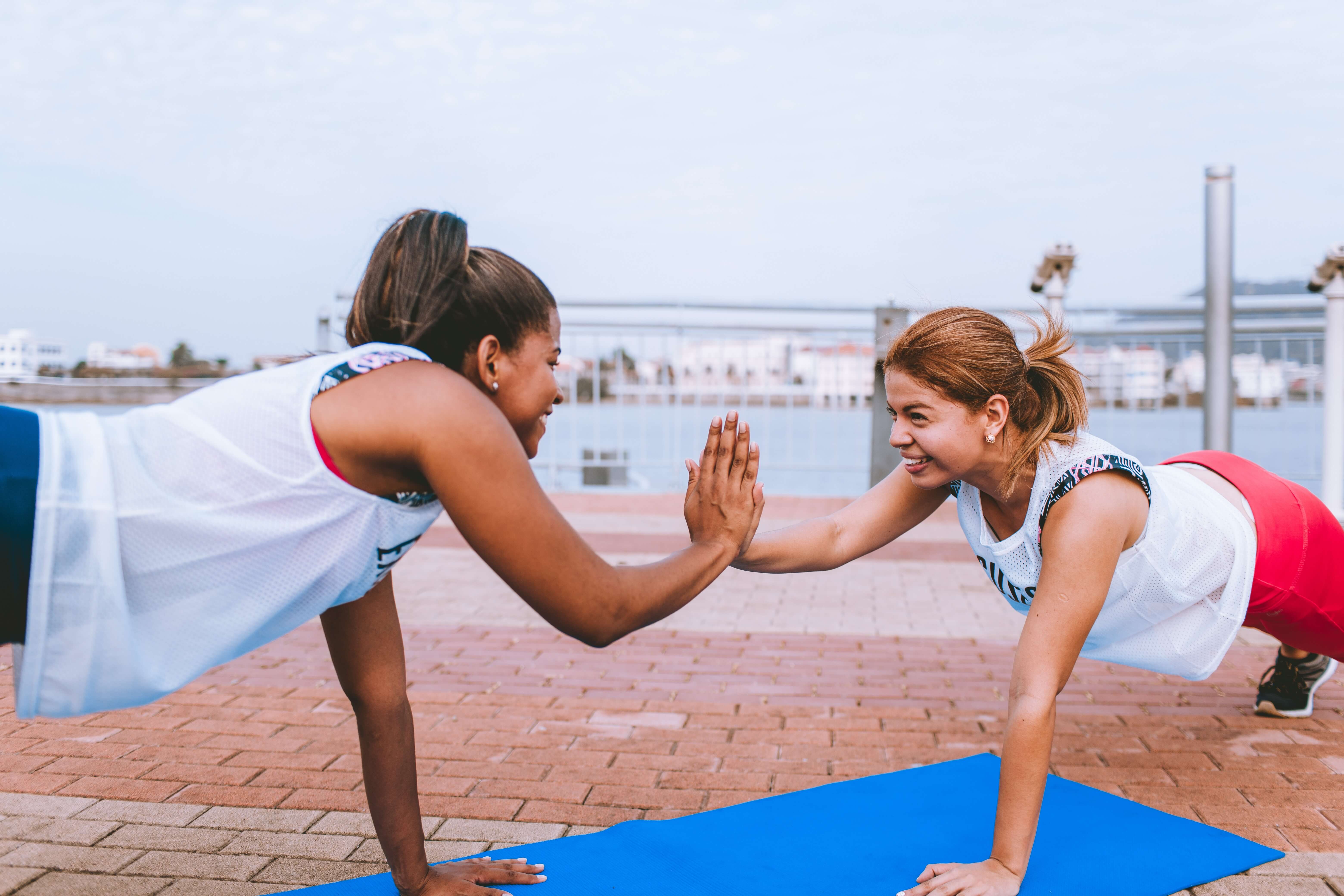The Best Cross-Training Plan For Runners

Drop down and give us twenty.
Let’s see 10 burpees. Finish the set with five squat jumps. And yes, this workout is absolutely for runners.
Runners should make sure they are adding in cross-training workouts throughout the week. But finding the best cross-training plan could be the real challenge.
The problem is many runners just don’t know exercises that benefit their needs the most. They might not know how often to cross-train or how to find (or determine) the best plan for them.
Cross-Training For Runners: The Basics

Runners might not know where to start when it comes to cross-training. Some might want want to check out a new class like spinning or Pilates. Others might want to familiarize themselves with bodyweight exercise moves that they can do in circuits.
This is a good time to check out classes offered at a local gym. New members can generally pick up a pass for a free trial period.
Classes like TRX or kickboxing might seem out of a runner’s wheelhouse, but give it a try because it might end up being a cross-training go-to.
Take advantage of the free weights and machines to strength train. But runners don’t need a gym membership in order to cross-train.
The Beauty of Bodyweight Workouts
Bodyweight exercises are among the greatest ways to cross-train. In fact, it just might be the best way to cross-train.
It doesn’t require any equipment except for ourselves. And runners can customize to include moves that provide a full body workout or focus on specific parts like arm day and leg day.
These workouts are great for building endurance if going Tabata rounds, aiding in weight loss, sculpting muscles and increasing strength.
Types of Bodyweight Exercises:
- Squats
- Lunges
- Push-Ups
- Planks
- Burpees
- Dips
- Leg raises
- Bridges
- Sit-Ups
- Mountain Climbers
- Skaters
Cross-Training Examples:
- Weight lifting (strength training)
- Bodyweight exercises
- Cycling
- Pilates/ Yoga
- Swimming
- TRX
- Boxing/ Kickboxing
- CrossFit
- Walking
Plan Your Cross-Training Schedule
How often should a runner cross-train?
Runners need to take a Goldilocks approach when cross-training. This means not too little, not too much.
The best cross-training plan when it comes to the amount per week depends on goals. If training for a big event like a marathon, focus on the runs.
This means only one to two days a week. Cross training can be done on a rest day or can be substituted for an easy, low-mileage run.
Recreational runners, or those who run simply for fun, should get two to three days of cross-training days each week. This is the case for those who typically run two to four days.
Think run, cross-train, rest, repeat. Then use the last day for another run or to cross-train.
Schedule Examples:
Monday: 3 to 4 miles
Tuesday: Spin class
Wednesday: Rest day or yoga
Thursday: 3 to 5-mile run
Friday: Weights at the gym or body weight exercises

Saturday: Long run
Sunday: Rest
Monday: Leg and back workout and short run
Tuesday: 3 to 4-mile run
Wednesday: Kickboxing or arm workout and short run
Thursday: Full body workout
Friday: Rest
Saturday: Long run
Sunday: Rest or yoga
Monday: Short run with an arm workout
Tuesday: Pilates
Wednesday: 3 to 5-mile run
Thursday: 3 to 5-mile run
Friday: Zumba or elliptical
Saturday: Rest
Sunday: Bodyweight exercises

The best cross-training plan for runners really depends on individual goals, so plan out days per week that fits the runner’s schedule the best. Then try to switch things up and do a mix of cross-training exercises like instructor-led classes and bodyweight exercises to become a well-rounded athlete.
The Best—And Ultimate—Cross-Training Plan For Runners
This might be subjective. But adding in this cross-cross-training plan will yield results.
Aim for Tabata rounds twice a week when not training for a big race. Have three exercises and complete as many of them as possible for 30-seconds to a minute, with 10-seconds of rest in between. Then move on to three different moves, and then three more moves.
Repeat for eight rounds.
Another way is to count down the moves like 30 mountain climbers, 20 knee raises, 10-second plank. Repeat. Then switch up the combo. Complete three rounds, each round repeating the moves twice.
Examples of combos include burpees, squat with a kick on each side, plank, skaters, mountain climbers, bicep curls, and deadlift.
All runners need to a yoga mat and dumbbells.
Start with a warmup then focus on rounds of cardio with moves like high knees and jumping jacks. Then do rounds of weights to focus on arm muscles.
Then get down on the mat and do ab work. The best core moves for runners include bicycles, plank jacks, Russian twists, and leg lifts.
Aim for at least 30-minutes of this type of workout.

Why should runners plan on cross-training?
Running is a great full body exercise, but some muscles are ignored. That’s why cross-training is important.
It allows balance when it comes to strengthening. Runners can focus on muscle groups they often ignore such as inner thighs or shoulders. This further reduces the risk of injury.
It helps keep the muscles guessing, and the mind free from boredom instead of always running.
Sources
- , The Dos and Don’ts Of Cross-Training, Running Website
- , The Benefits of Cross-Training for Runners, Health Website
Latest Articles
 Is Running on a Treadmill Easier Than Running Outside?Runners have their own preferences, whether it is treadmill running, running outside on the road, or exploring trails. So...
Is Running on a Treadmill Easier Than Running Outside?Runners have their own preferences, whether it is treadmill running, running outside on the road, or exploring trails. So... Is It OK to Use Trail Running Shoes on the Road?While trail running shoes can be used on roads, especially in situations where a runner encounters mixed terrains or pref...
Is It OK to Use Trail Running Shoes on the Road?While trail running shoes can be used on roads, especially in situations where a runner encounters mixed terrains or pref... How to Fix Sore Quads After Running?Rest, ice, gentle stretching, and over-the-counter pain relievers can help soothe sore quads after running. Also, ensure ...
How to Fix Sore Quads After Running?Rest, ice, gentle stretching, and over-the-counter pain relievers can help soothe sore quads after running. Also, ensure ... 10 Fruits With The Most Electrolytes to Replace Sports DrinksThese fruits are high in electrolytes such as potassium, magnesium, and calcium, essential for hydration, muscle function...
10 Fruits With The Most Electrolytes to Replace Sports DrinksThese fruits are high in electrolytes such as potassium, magnesium, and calcium, essential for hydration, muscle function...

